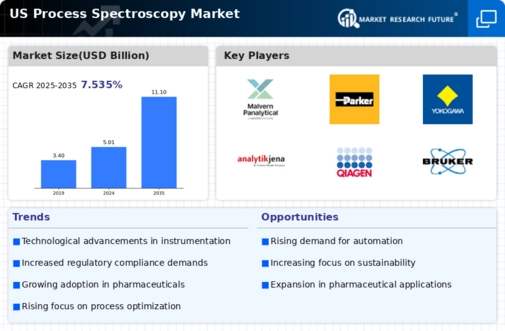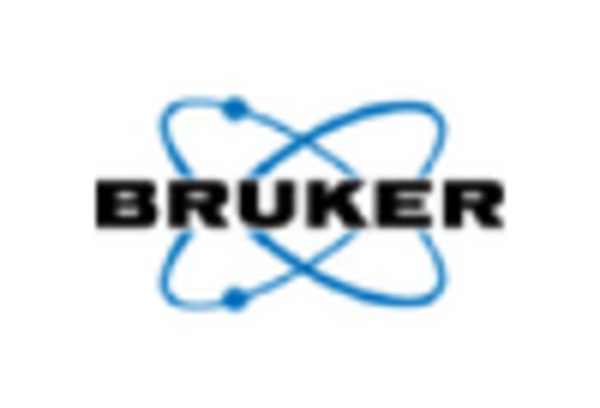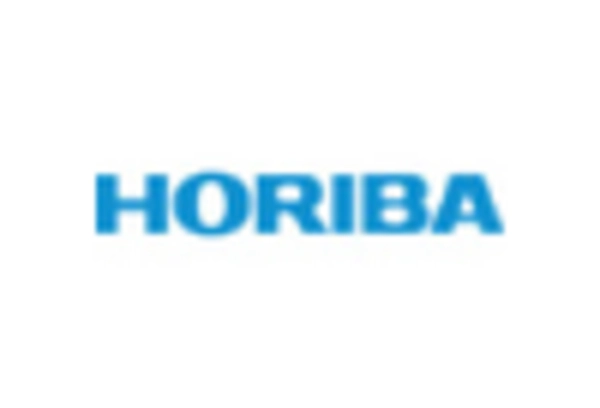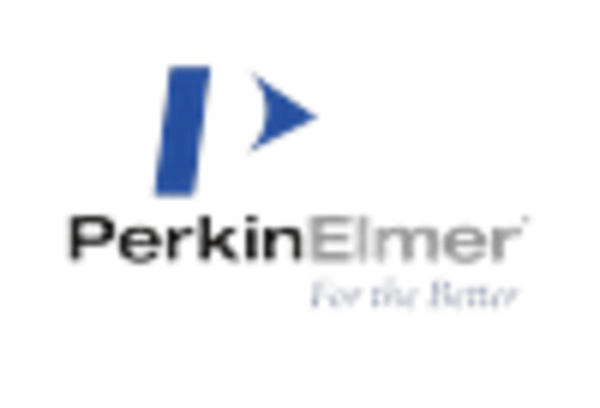Growing Environmental Regulations
The process spectroscopy market is being influenced by the growing emphasis on environmental regulations and sustainability practices. Industries are under increasing pressure to monitor emissions and ensure compliance with environmental standards. Spectroscopic techniques, such as Fourier-transform infrared (FTIR) spectroscopy, are being utilized for real-time monitoring of pollutants and hazardous substances. This shift towards environmentally friendly practices is not only a regulatory requirement but also a market differentiator for companies aiming to enhance their corporate social responsibility. As environmental regulations become more stringent, the demand for process spectroscopy solutions is likely to rise, potentially leading to a market growth rate of around 6% annually. This trend highlights the intersection of regulatory compliance and technological advancement in driving the process spectroscopy market.
Increased Focus on Quality Assurance
Quality assurance remains a pivotal concern in the process spectroscopy market, particularly in sectors such as pharmaceuticals and food production. The need for consistent product quality has led to the integration of advanced spectroscopic techniques to monitor and control production processes. For example, the pharmaceutical industry has seen a surge in the adoption of near-infrared (NIR) spectroscopy, which allows for non-destructive testing of raw materials and finished products. This method not only ensures compliance with regulatory standards but also enhances overall product safety. As companies invest in quality assurance measures, the process spectroscopy market is expected to witness substantial growth, with estimates suggesting a market value increase to over $1 billion by 2027. This focus on quality is likely to drive innovation and adoption of new technologies within the market.
Rising Demand for Real-Time Analysis
The process spectroscopy market is experiencing a notable increase in demand for real-time analysis across various industries, including pharmaceuticals, food and beverage, and chemicals. This trend is driven by the need for immediate data to enhance quality control and ensure compliance with stringent regulations. In the pharmaceutical sector, for instance, the market is projected to grow at a CAGR of approximately 8% from 2025 to 2030, as companies seek to implement more efficient monitoring systems. Real-time analysis not only improves product quality but also reduces waste and operational costs, making it a critical driver in the process spectroscopy market. As industries continue to prioritize efficiency and accuracy, the adoption of real-time spectroscopic techniques is likely to expand, further propelling market growth.
Technological Innovations in Spectroscopy
Technological innovations are playing a crucial role in shaping the process spectroscopy market. Advancements in sensor technology, data analytics, and machine learning are enhancing the capabilities of spectroscopic instruments, making them more efficient and user-friendly. For example, the introduction of portable spectrometers has revolutionized on-site analysis, allowing for immediate decision-making in various applications. These innovations not only improve the accuracy of measurements but also reduce the time required for analysis, which is particularly beneficial in fast-paced industries. As companies increasingly adopt these advanced technologies, the process spectroscopy market is expected to grow significantly, with projections indicating a market size exceeding $1.5 billion by 2028. This trend underscores the importance of continuous innovation in maintaining competitive advantage.
Expansion of Applications Across Industries
The versatility of process spectroscopy technologies is leading to an expansion of applications across various industries, thereby driving growth in the process spectroscopy market. Industries such as petrochemicals, environmental monitoring, and agriculture are increasingly utilizing spectroscopic methods for analysis and quality control. For instance, in the petrochemical sector, Raman spectroscopy is being employed to analyze complex mixtures and optimize refining processes. This broadening of applications not only enhances the market's appeal but also encourages investment in research and development. As new applications are discovered, the process spectroscopy market is likely to see a compound annual growth rate (CAGR) of around 7% over the next five years, indicating a robust growth trajectory fueled by diverse industry needs.
















Leave a Comment